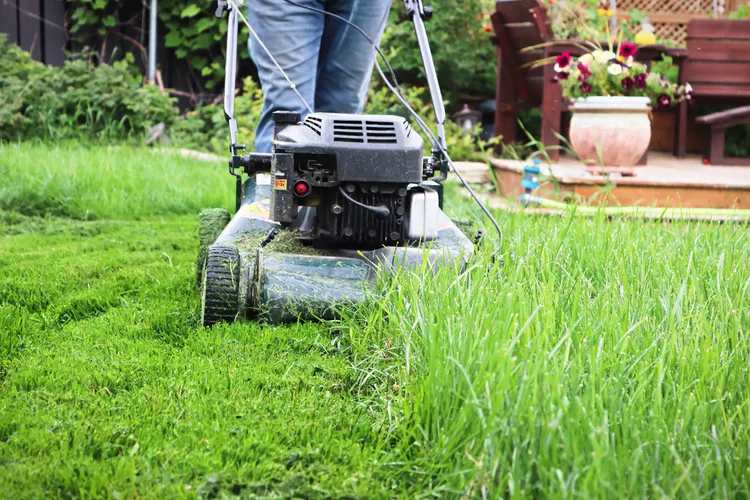While rain is welcome for good grass growth, it can make regular mowing tough. Between morning and evening dew, regular rain showers, and life’s responsibilities outside of lawn care, finding a dry window to mow your lawn can be tricky. Keep an eye on the forecast and make every attempt to mow your lawn when it is dry. Mowing wet grass is not only difficult, but it can also be dangerous. If you must mow, use these tips to ensure your safety and achieve a good result when working with wet grass blades.
5 Reasons Not to Mow Wet Grass
1. It’s dangerous.
Wet grass is slippery. Getting your footing on the soft ground and moist grass is difficult, especially on uneven terrain. Riding mowers are not designed for wet conditions and are more likely to roll on embankments. Push mowers can slip off course and be awkward to control on wet turf.
2. Clippings will clump together.
Water acts as a glue to adhere wet grass clippings together. Instead of dispersing evenly over the lawn after they are cut by the mower blades, wet clippings clump together and fall on the lawn in piles. The clumps of clippings can cause brown spots on the lawn and contribute to the thatch layer.
3. Soil compaction is a potential.
If the grass is wet due to soaking rain, the soil will be soft and susceptible to compaction by a riding lawn mower and repeated traffic of any sort. Compaction causes long-term turf problems. Compaction reduces air spaces in the soil profile, limiting life-giving oxygen available to roots and compressing channels for water and nutrients to reach the turf’s root zone.
4. Turf damage is more likely.
Wet conditions make maneuvering a mower more difficult. Quick turns can result in tires skidding and damaging the turf. Mowing when it is wet often results in an uneven surface. Wet conditions cause some grass blades to bend under the weight of water. When the mower passes over the lawn, the bent blades are not cut while others are trimmed.
5. Cutting wet grass creates an opening for disease.
Mowing grass when it is wet often results in tearing the leaf blade instead of making the clean cut that is typical when cutting dry grass. The torn blade has multiple entry points for fungal infections.
What to Do When It’s Wet and You Must Mow
It is always best to wait until the grass is dry before starting the lawn mower, but occasionally, the forecast doesn’t allow you to wait. If rain is relentless, and your grass is reaching maximum height for your mower, use these 7 tips to cut the lawn safely.
1. Sharpen the mower blades.
Sharpen the blades before you mow to make clean cuts. Clean cuts are key to an even lawn and also a line of defense against fungal diseases. Raggedly cut grass blades have many openings for fungi to enter the plant. Fungi are especially prevalent during the warm, moist conditions consistent with summer rainfall. Sharp mower blades can prevent turf diseases.
2. Set the mower deck at 4 inches or higher.
Mowing high reduces the size of the clippings, which prevents the mower from clogging. Mowing high also limits scalping—cutting the lawn too short.
3. Don’t bag clippings. Set the mower to side discharge.
Bagging wet clippings is hard on the mower and sometimes nearly impossible due to the amount of clippings and the moisture. Set the mower to side discharge and distribute the clippings over the lawn as much as possible.
4. Go slow.
Get the best cut on wet grass by mowing at about half the walking or driving speed you usually do when mowing a dry lawn. Slow mowing results in a more even surface when you are finished.
5. Dress for the job.
Wear sturdy shoes with good traction. Wet grass is slippery, and water-laden soil can create uneven terrain. Make sure you have good support by wearing well-fitting shoes that can grip in adverse conditions.
6. Mow and then mow again.
Break up clumps of clippings that result from mowing wet grass by mowing a second time on the same day. Mowing the lawn twice will finely cut the clippings and redistribute them.
7. Clean your mower well.
Wet grass will cling to your machine’s mower deck, blades, tires, and body. Wipe down the blades and body of the mower, and use a large putty knife to clean the underside of the deck. Be sure to remove grass from the tires, too.




















